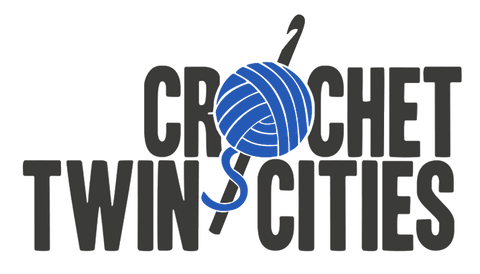
Jean made these baskets using the Bavarian technique. If you like color work, front and back posts, and don't mind doing a lot of treble crochet, consider this technique. The post stitches make an interesting texture on the front of the project. Wouldn't it be interesting to try felting these baskets? Would the finished product be textured? How would the colors work out? Explore the possibilities!

This picture doesn't do Joy's neck warmer justice. It's rectangle that buttons in front and snugs up behind the neck. The fringe spreads out in a most attractive way.
In April we will study tapestry crochet? Don't know what tapestry crochet is? Here's June's oblong tapestry basket. Tapestry uses all single crochet stitches, with each stitch covering the second color, which is carried along until needed. Once again, this might be interesting to felt.
Amigurumi is popular with crocheters. Lisa made this little hedgehog. The fuzzy "hair" has a bit of sparkle in it.

Lisa made a hat and scarf out of a self-striping yarn. The hat is crocheted "flat" and the fluffy loops are crocheted on after the hat base is done. The yarn color changes make it look as though many different skeins were used, but actually, the effect comes from a single variegated yarn. How different the subtle color changes appear in the matching scarf. When you see the hat and scarf together, you know they are indeed made from the same yarn.
Tired of pastels for baby gear? Maxine used this more muted pink/yellow/green colorway in Plymouth Encore to make a baby hat and cocoon. You can't see it here, but the cocoon is held together with a pink crocheted cord. Once the baby outgrows the cocoon, remove the cord and use the fabric as a burp pad.

June made this hat and scarf out of a self-striping yarn. Click on the image to take a closer look at the black ball fringe she added to the edge of the hat--a real wow factor (we were impressed!). Be warned, though--those little balls bounce against the forehead with every step, which June says can be annoying. Yeah, maybe, but how cool an effect!









